That is quite easy to answer – you just need to clean them well, tie them tighter (it gets windy in the wintertime), take out the sails and store them in the warehouse. This is the image the majority has in their minds when ‘wintering’ is mentioned. The reality looks very different, especially in charters that can be called serious players. Wintertime is probably the most intensive part of the year in terms of boat care and maintenance. Once the booking is off and no more clients are expected in the base, it is time to get working seriously.
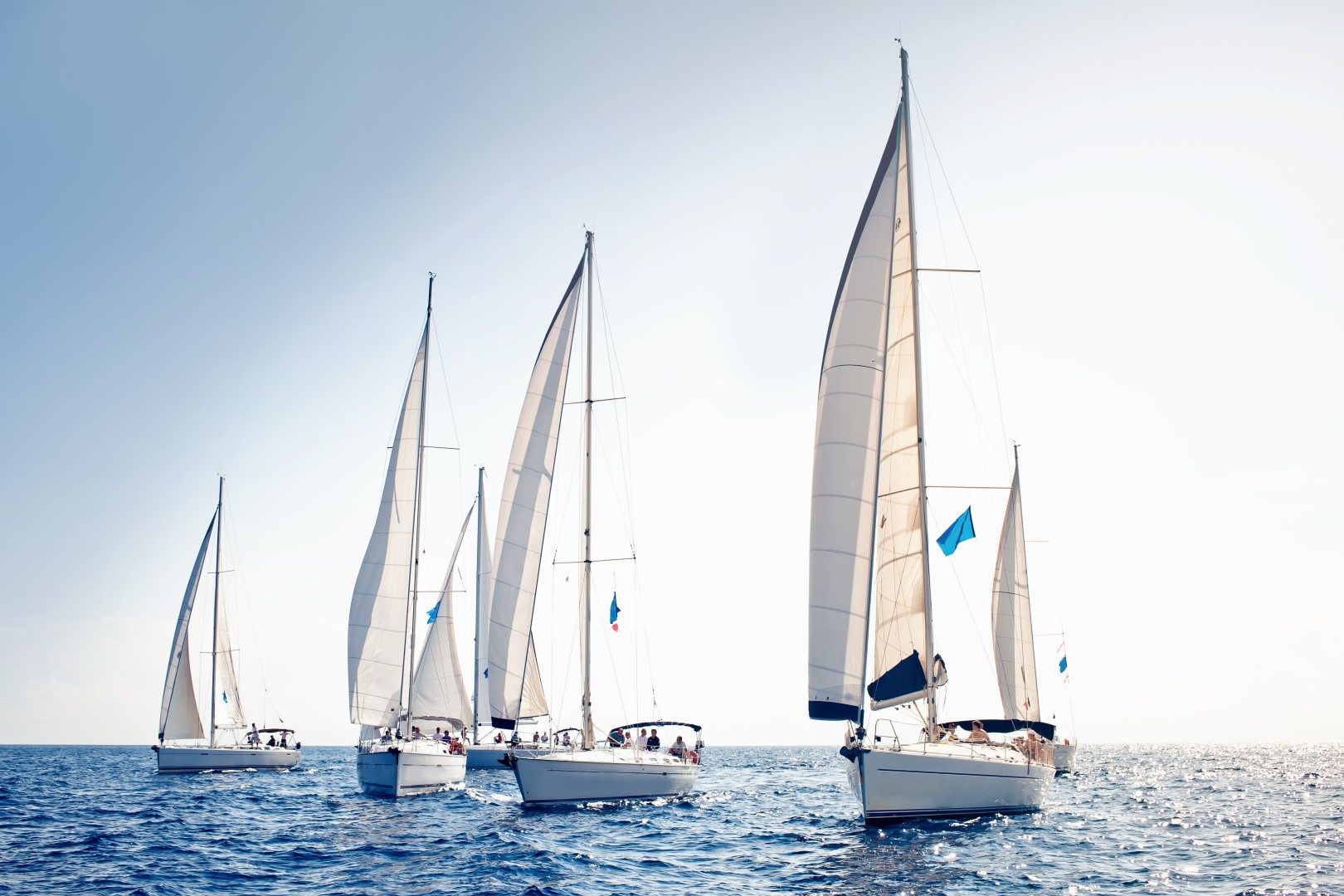
Taking down the sails
First of all, the sails need to be taken down. This is not too difficult with furl-in sails, but when it comes to full battened sails, it is a task for more than one person and a tool box. Of course, this task has to be done after the sails are thoroughly washed with sweet water and completely dried out. After detailed inspection, some of them will find their place in dark and dry shelf in the warehouse, while the majority will end up at the sail maker’s workshop for ‘wintering service’.
Next task is to take all sheets, ropes and other lines, and to wash all the salt from them. This can be done in sweet water basins using fabric softener, or by folding them and letting them be washed by rain. The final stage of rope treatment is to use rope cutter and duct tape to do all their tails nicely. They may wait for the next season in the boat trunks and lockers.

Deck equipment
Mentioning the deck equipment, all halyard and sheet winches need to be opened, the used grease and dirt have to be washed up, and the entire system re-lubricated. Anchor windlass electro-motor, as well as the bow (and stern) thrusters electro-motor have to be taken to the workshop where the electrician should clean, re-lubricate and test them again. If everything goes fine, they are getting back to the boat.
Other deck electronics such as a GPS plotter, wind and depth indicators and other ‘screens’ are taken from the deck, inspected by the electrician, and stored on the shelf until spring. Meanwhile, the cleaning squad takes away all the bed linen, sheets, pillows and blankets, curtains and cushion wrappers for inspection, repair and chemical treatment. Once repaired and cleaned, they will also wait for spring in the warehouse.
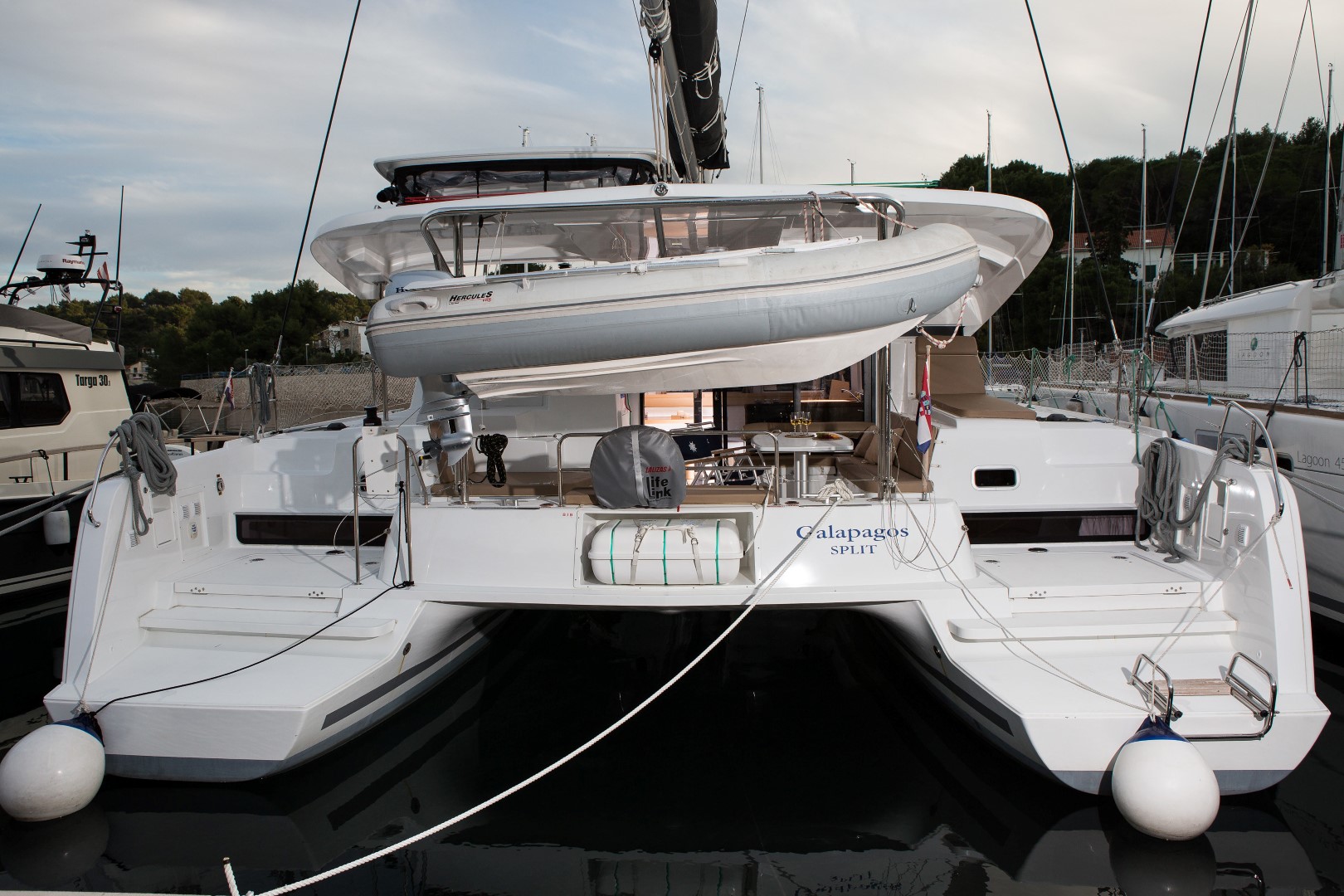
Dirty job
The ‘dirty job’ includes toilets, waste tanks and cookers. Toilet flushing system has to be completely disassembled and treated with hydrochloric acid. Seals, vents and valves are being replaced by new ones, while the entire flushing system has to be greased and lubricated before mounting. Toilet outlet pipe has to be replaced at least every two years. Last year’s can only be cleaned of lime stones.
When it comes to electric toilets, then the electro-motor and the knives need to be checked additionally. This process is an extremely hard work, but also one of the most important ones. It is hard not only because it is risky due to bacteria and dangerous chemicals, but also because the flushing system and outlet tubes are rigid, very hard to reach and tricky to disassemble and mount again. On the other hand, the most of technical support calls and damages in the season refer to flushing systems and irresponsible use of the toilets that resulted in clogged system. Think about it when you charter the boat next time. Do not forget sanitizing and lime scale treatment of both waste tanks and fresh water tanks.

Interior
The other part of the ‘dirty job’ takes place in the galley. The cookers have to be taken to the workshop where they will be totally disassembled and thoroughly cleaned. This time hydrochloric acid is not in use, but other degreasing and anti-corrosion agents are. Re-assembled cooker is gas-inspected and finally polished before it is mounted back in the galley. Meanwhile, the sink outlet is thoroughly cleaned and inspected, or just replaced if needed. Furniture maintenance includes inspection of all doorknobs, hinges and locks. The usual problem with doorknobs is their used springs whose replacement requires lots of patience and some skill.
Interior dining tables and chart tables are usually taken out for varnishing, often in multiple layers. The same could be done with companionway doors and ladders. Final interior inspection includes all the switches, lamps, windows, hatches, blindfolds and seals. Mechanic’s part of the job is to change lubricants from the engine along with oil and fuel filters and a transmission belt. Special care is taken of the water pump – it needs to be taken out and inspected and re-lubricated, while the impeller needs to be replaced with the new one. More sophisticated services on the engine are done in line with manufacturer’s specifications.
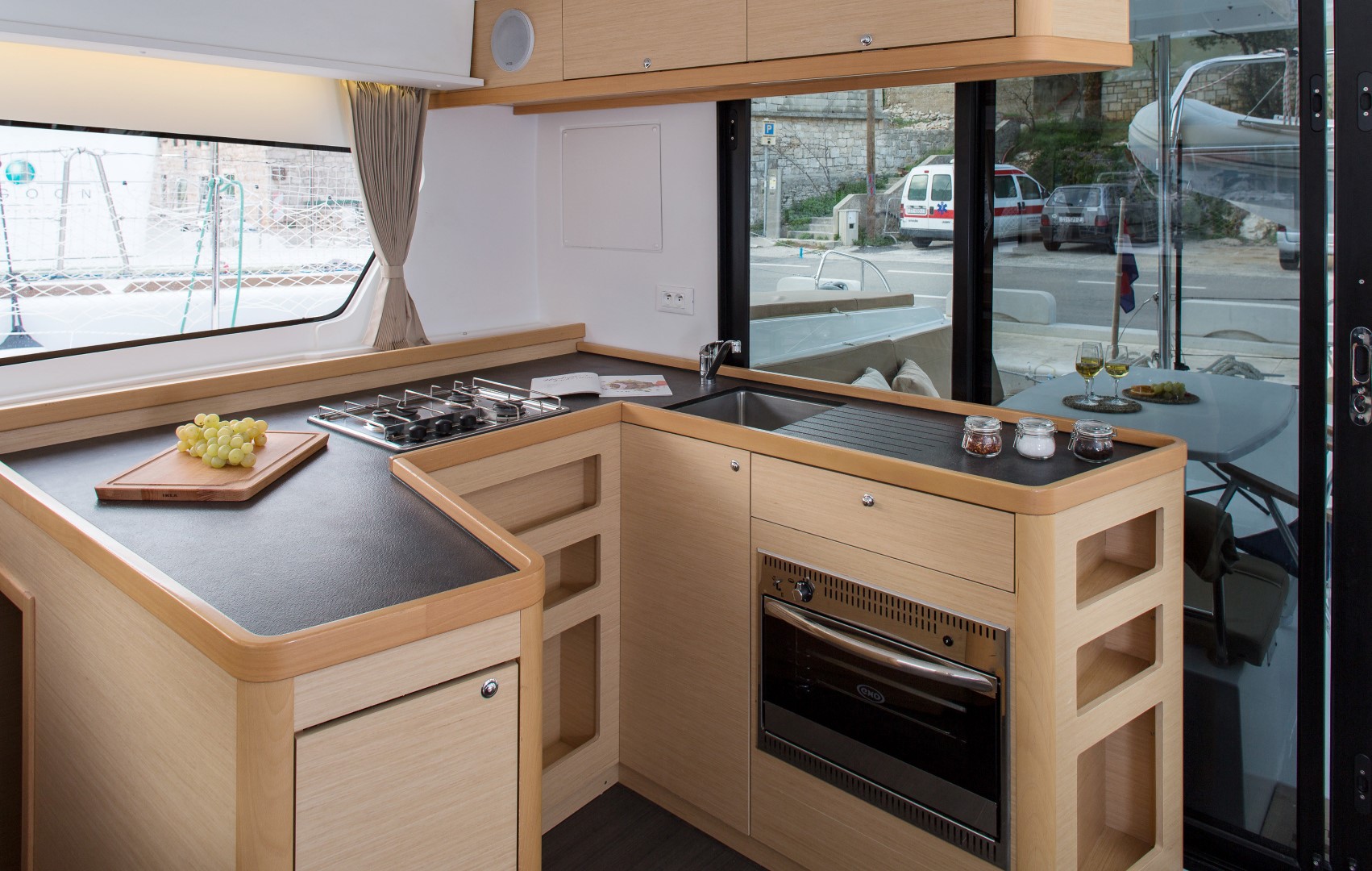
Final touches
Now it is time to lift the boat out to the dry dock. After the hull is washed out with sweet water and is completely dried out, it is time to grind down the old antifouling cover. This is a rather difficult task, not only because of health risk materials, but because of a very uncomfortable position while working with heavy, powerful and noisy grinder often overhead.
The rest of the annoying part of the hull treatment is sides polishing that has to be done very precisely and carefully. While the boat is on the dry dock, all the seacocks have to be inspected and re-lubricated along with speed indicator and depth-meter sounds. Mechanics are busy when the boats are on the dry dock, too. They have to change the lubricants in the sail-drive system along with all related seals. The propellers are replaced by new ones quite often as well.
Once all mentioned is done and the boat is back in the sea, the caretakers have to use every dry and windy day to open all the windows and hatches in order to regulate the interior humidity, which can be fatal for interior upholstery and fitting. Batteries and engine liquids are taken care of by running the engine one or two hours per week.
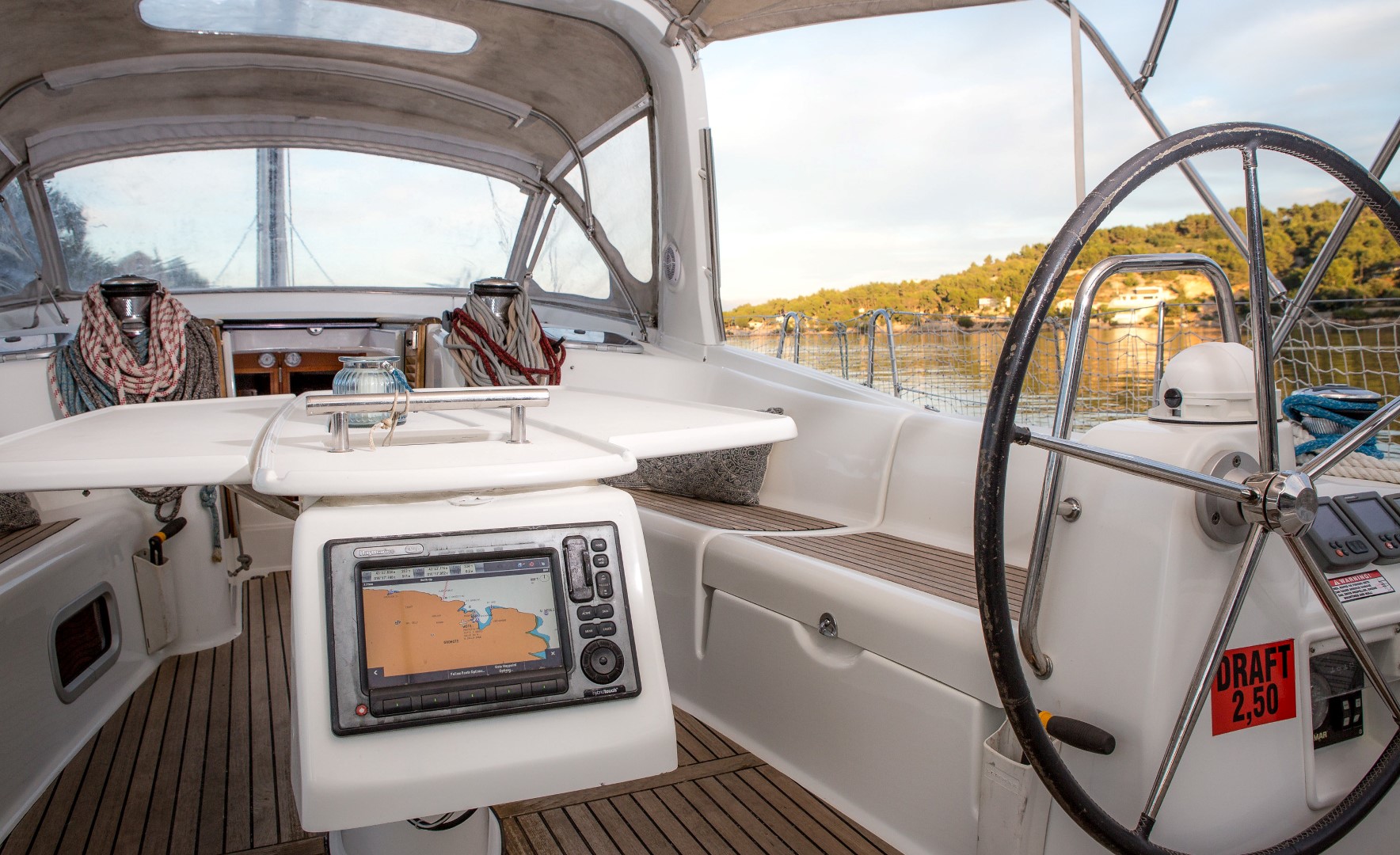
Final touches, part 2
So much about the yachts, I did not even mention services on outboard engines and tenders! A lot of working hours, effort, skill, spare parts, materials, agents and energy have to be engaged and invested in before the boat can take a rest and go ‘wintering’. So much necessary work to be done, but one can hardly see the difference between ‘before’ and ‘after’. And that is not all. The base manager not only has to organize the staff and logistics, but to coordinate works in line with travel lift manager and, above all, the manager of all managers that controls the weather because majority of works need to be done outdoors.
Can you imagine now what it takes to manage the fleet of some 120 boats? Incredible!
Of course, this is just what really needs to be done if you want to run a serious charter fleet. I do not doubt that there are managers who operate the way described on the very beginning of the text. Have a nice winter!
I wish you calm seas, fair winds and a strong mast!

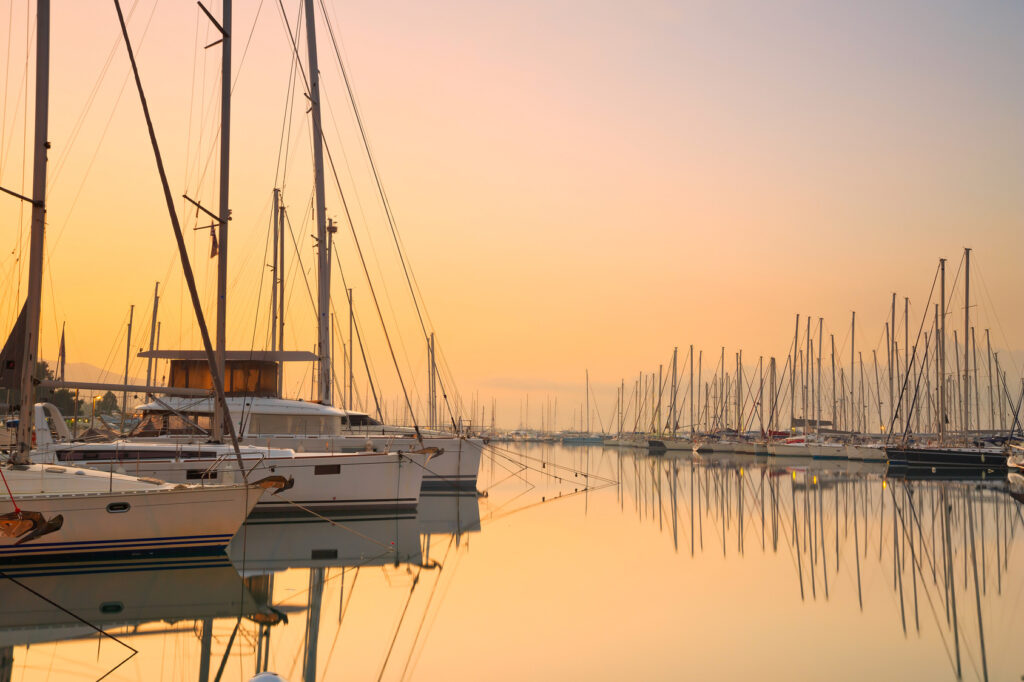
Is this real?